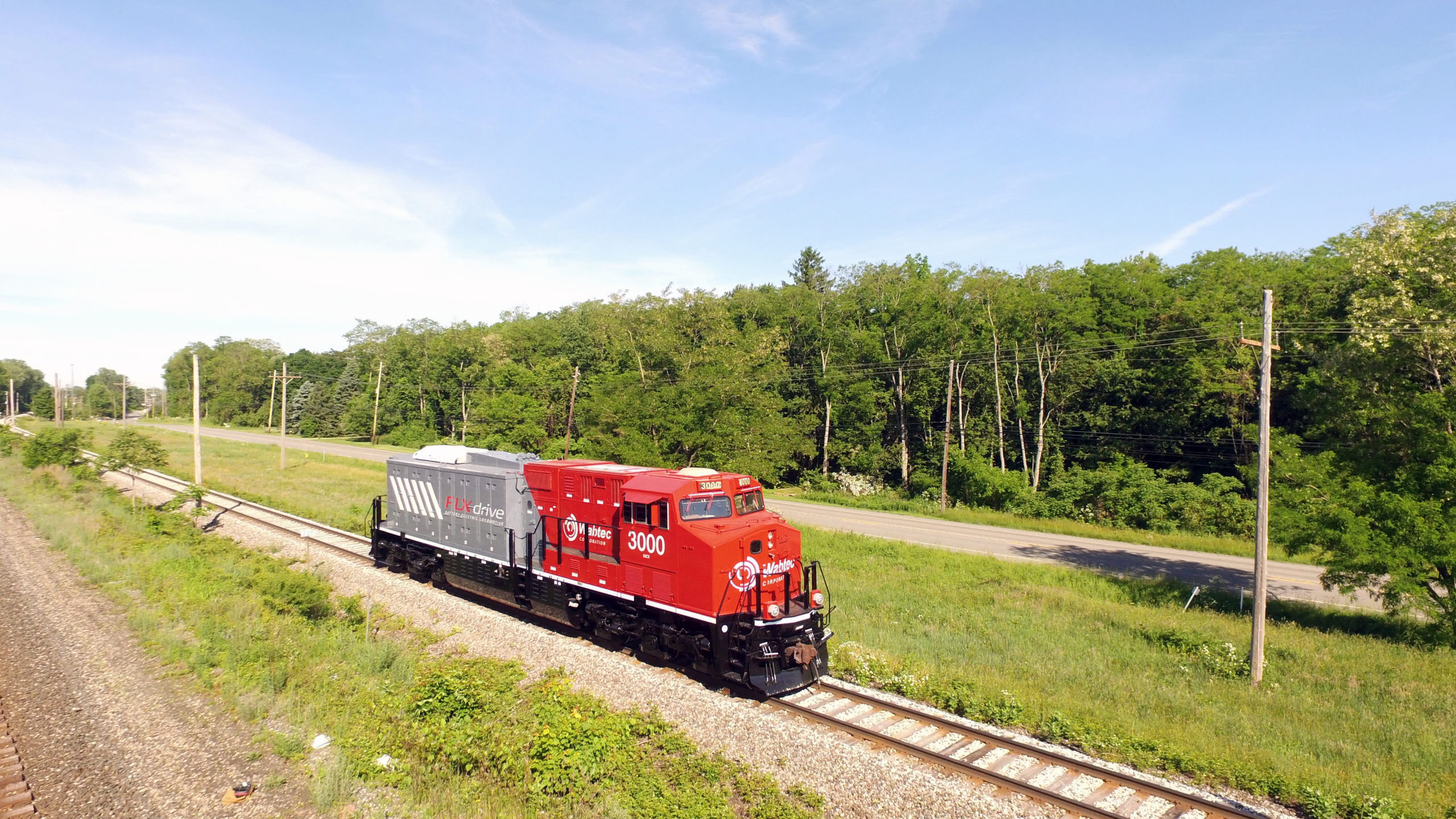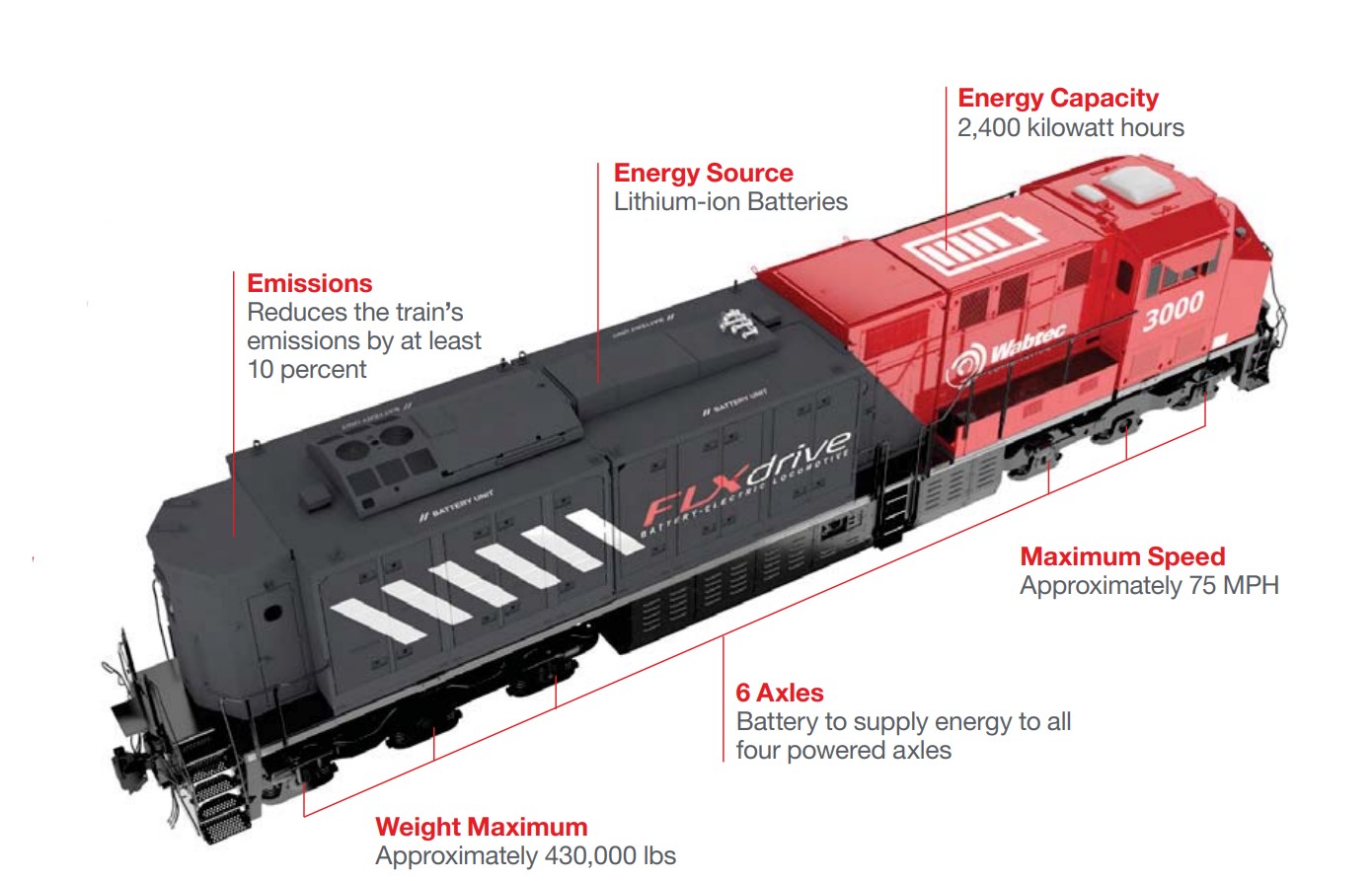Associate Member Profile | Wabtec
Posted onWabtec is a leading global provider of equipment, systems, digital solutions, and value-added services for the freight and transit rail sectors. Offering “transportation solutions that move and improve the world,” Wabtec has more than 27,000 employees working in more than 50 countries. The company calls its employees “architects of the future.” And innovation is at the core of a value system aimed at “raising the bar for safety, quality, talent, and value.” We spoke to Wabtec’s Dan McNair, Director, Product Strategy and New Technology, about how the company is helping clients achieve their decarbonization goals.
RAC: There seems to be a lot of excitement about your FLXdrive battery project. Tell us about that.
Dan McNair (DM): It is an exciting project. FLXdrive allows operators to power locomotives electrically, using lithium-ion batteries. We’ve been seeing a building push from our customers around sustainability and decarbonization. And FLXdrive delivers both economic and ESG (environmental, sustainability, and governance) incentives. It’s built to operation on a mainline train because that’s where fuel consumption and emissions come from.
If a mainline train is running with four diesel locomotives today, replacing one of those diesels with just one battery-operated locomotive can produce savings up to 30% across the entire train. Many trains burn upwards of a million gallons of diesel per year, so the economic incentive is significant.

RAC: Wow. So, how did FLXdrive come about?
DM: Well, it’s a 20-year journey that dates to our GE Transportation days. But it’s essentially a story of technology catching up with an idea.
Initially, we looked at doing something with sodium based Durathon batteries. But the chemistry just wasn’t going to get us to where we needed to be. The advancement of lithium-ion batteries, driven by the auto industry, so costs went down, and energy capacity went up quickly over the last decade. And by 2017-18, we were having conversations with BNSF. First, we thought of using FLXdrive for switcher applications as we were in a crawl – walk – run mentality. But BNSF wanted to go further faster and solve for mainline operations as well, given the economic incentives of mainline. Additionally, we can add an energy management overlay system for the mainline (Trip Optimizer) that acts as a multiplier for the fuel savings and emissions reductions. That was the genesis for a 2018 grant application from the state of California. And the results have been incredible.
RAC: Have you abandoned the switcher application?
DM: No not at all. In fact, we’ve been testing and proving that concurrently. And our zero-emissions switchers can yield huge benefits in environmental justice zones, and highly populated areas around busy yards. If We flipped an entire yard from diesel to battery switchers, the results are like taking 2,000 cars of the road annually, 70% noise reduction, and so on. There are other educational and job creation benefits that we can do with local communities, too.

RAC: In fact, you’ve been making the case to US lawmakers that investing in rail innovations like FLXdrive can help ‘build back better’ from COVID…?
DM: Absolutely. Our CEO was before Congress recently making the case for federal infrastructure investments in sustainability and innovation projects. We also recently released our Freight 2030 White Paper which talks about concrete ways rail innovation can help reduce emissions, create jobs, and improve safety. We believe we can produce 120 million tonnes of emissions savings per year not just through hardware but through digital applications and network optimization. It’s a genuinely exciting prospect. As was the case with electric vehicles, we just need some external help – like subsidization – to help get technology off the ground and get it going at scale.
RAC: If that support comes, what’s next for Wabtec?
DM: We’re making a play for hydrogen and renewables in future. Hydrogen fuel cells are still need a little power support while ramping up. And we see the FLXdrive batteries being part of that journey. Eventually hydrogen will be great for long range trips, and batteries will continue to provide regional value. By 2040, 2050 hydrogen can reliably power long, rural and remote runs – interstate and interprovince. And that will help deliver on environmental promises that have been made by governments here in the US, but also in Canada as well.